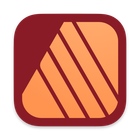
Scribus
Scribus is a professional, open-source desktop publishing (DTP) software designed for creating layouts for brochures, newsletters, magazines, newspapers, books, and interactive PDF presentations. It offers advanced layout and typesetting tools for graphic designers and publishers.
About Scribus
Scribus provides a sophisticated environment for desktop publishing. It stands out as a powerful and free alternative to commercial DTP software, catering to everyone from hobbyists to professional graphic artists.
Key capabilities of Scribus include:
- Robust Layout Tools: Precision controls for placing text and image frames, managing masters, and creating complex multi-column layouts.
- Color Management: Supports professional color workflows including CMYK, spot colors, and ICC color profiles for accurate print reproduction.
- Typography Control: Extensive typographical features including kerning, tracking, ligatures, and precise control over paragraphs and text flow.
- Pre-Press Capabilities: Features for generating high-quality print-ready output, including PDF/X standards for reliable professional printing.
- Vector Drawing Tools: Integrated tools for creating vector graphics directly within the layout.
- Import/Export Flexibility: Supports import of various file formats including OpenDocument Text (ODT), Microsoft Word (DOC/DOCX), and many image formats. Export options include PDF, EPS, and various image types.
- Scripting Support: Allows for automation of tasks through Python scripting.
Scribus is built with a commitment to open standards and delivers a feature set that competes effectively with proprietary DTP applications, making professional publishing accessible to all.
Pros & Cons
Pros
- Free and open-source with no licensing costs.
- Comprehensive professional DTP features comparable to commercial software.
- Strong support for professional print workflows and color management.
- Cross-platform compatibility (Windows, macOS, Linux).
- Active community providing support and ongoing development.
Cons
- Steeper learning curve for beginners compared to some alternatives.
- User interface can feel less polished than some commercial applications.
- Performance can sometimes be an issue with very complex documents.
What Makes Scribus Stand Out
Open Source and Free
Available for free under the GPL license, removing cost as a barrier to professional DTP.
Cross-Platform Compatibility
Runs on major operating systems including Windows, macOS, and Linux.
Professional Feature Set
Offers advanced features suitable for professional print and digital publishing workflows.
Features & Capabilities
11 featuresExpert Review
Scribus stands as a formidable and often overlooked competitor in the desktop publishing software arena. Released under the GNU General Public License, it offers a powerful and feature-rich alternative to proprietary software, making professional-level DTP accessible to users regardless of budget.
The software caters to a wide range of publishing needs, from simple flyers and brochures to complex magazines, newspapers, and books. Its core strengths lie in its robust layout engine and precise control over typographic elements. Users can meticulously position text and image frames, manage master pages for consistent designs, and exert fine control over kerning, tracking, and other vital aspects of typography.
A significant advantage of Scribus is its commitment to professional print workflows. It provides comprehensive color management capabilities, including support for CMYK color spaces and spot colors, crucial for achieving accurate colors in print. Furthermore, its support for PDF/X standards ensures that exported files meet the stringent requirements of professional printing presses, reducing the risk of errors during the printing process.
While not primarily a graphic design tool, Scribus includes basic vector drawing capabilities, allowing users to create simple shapes and illustrations directly within their layout. This integration streamlines the workflow for certain tasks.
Import and export flexibility is another area where Scribus performs well. It can import various file formats, including popular text document formats like .doc and .odt, as well as a wide array of image formats. The export options are equally diverse, prioritizing industry-standard formats like PDF and EPS.
The learning curve for Scribus can be steeper for those new to DTP software. While the interface is functional, it may not be as immediately intuitive as some commercial alternatives. However, the documentation and online community resources are generally helpful.
Performance can vary depending on the complexity of the document and the hardware, but for typical publishing tasks, Scribus is generally responsive.
One of the most appealing aspects of Scribus is its open-source nature. This not only means it's free to use, but it also benefits from a dedicated community of developers and users who contribute to its ongoing improvement and provide support.
In summary, Scribus is a highly capable desktop publishing application that provides professional-grade tools without the associated cost of proprietary software. While it requires a willingness to learn its interface and workflow, the investment of time is rewarded with a powerful and flexible tool for creating high-quality publications ready for both print and digital distribution.









